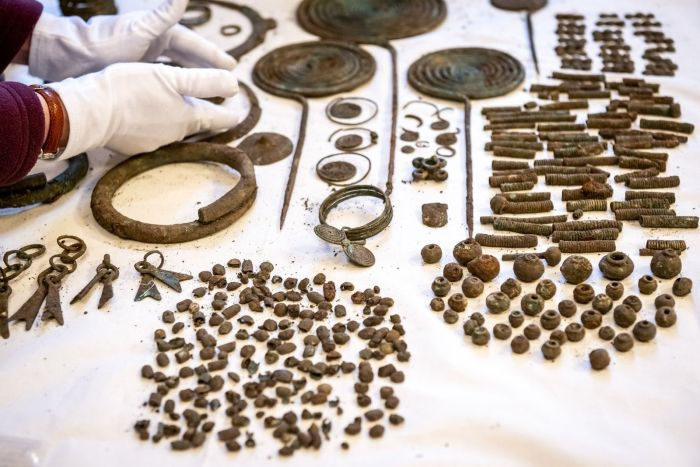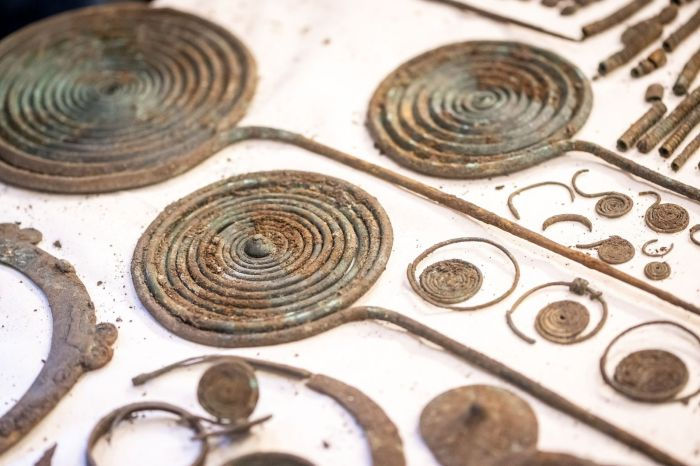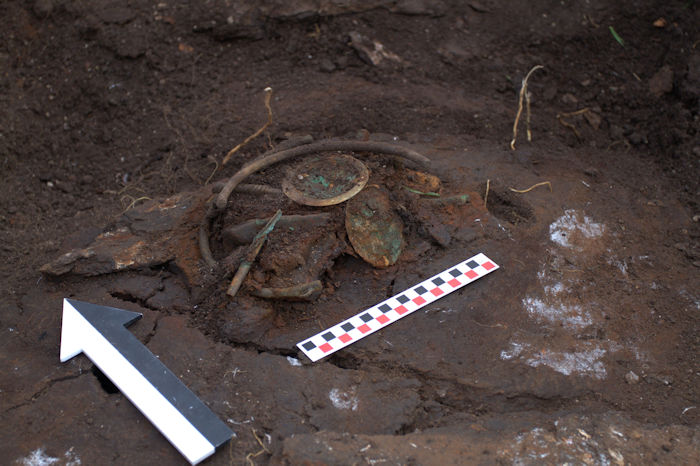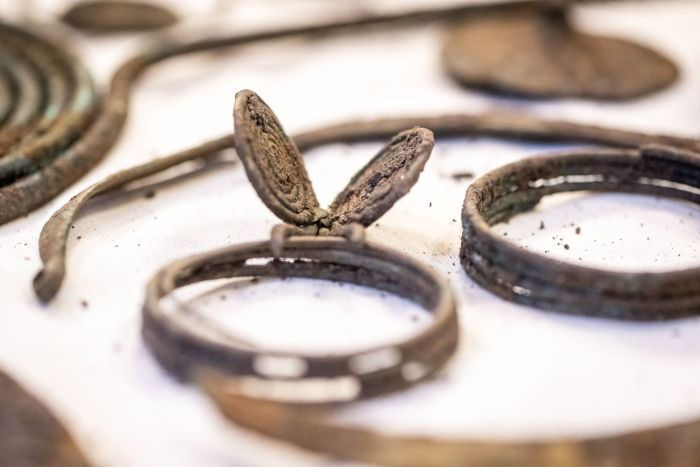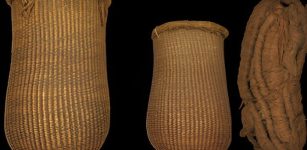Dozens Of Unique 2,500-Year-Old Ceremonial Treasures Discovered In A Drained Peat Bog
Conny Waters - AncientPages.com - About 2,500 years ago, people tossed unique and beautiful treasures into a lake. Today the site is a drained peat bog converted into farmland.
Archaeologists report that dozens of bronze ornaments, such as necklaces, bracelets, greaves, decorative pins, and numerous human bones, were discovered in the Chelmno district. Scientists say these are most likely objects used in sacrificial rituals 2,500 years ago.
According to archaeologists, the 2,500-year-old artifacts found in the Chełmno district are the remains of sacrificial rituals. Credit: PAP/Tytus Żmijewski
The discovery was made by members of the Kuyavian-Pomeranian Group of History Seekers (Kujawsko-Pomorskiej Grupy Poszukiwaczy Historii), who conducted searches using metal detectors.
Once metal detectors discovered something of value was hidden at the site, archaeological excavations led by Wojciech Sosnowski from the Nicolaus Copernicus University in Torun were initiated.
As a result of plowing, many ancient objects were found scattered loosely on the ground. Scientists discovered three deposits filled with whole or damaged ornaments and bronze items used in all likelihood for ceremonial purposes. The research team recovered necklaces, bracelets, greaves, horse harnesses, and pins with spiral heads.
Credit: PAP/Tytus Żmijewski
Archaeologists were also delighted to find unique items made of organic raw materials, such as fabrics of antler tools in bronze sheet frames and fragments of ropes. Finding organic raw materials that remained well-preserved under such wet conditions is unique.
Most objects can be traced to the Lusatian culture that dates back to the Bronze Age and the Early Iron Age (14th-4th century BC), occupying the broadest range of central Europe.
Credit: PAP/Tytus Żmijewski
"This culture covered almost the entire territory of the Polish lands, central and northwestern Slovakia and Moravia, northern and northeastern Bohemia, Saxony, Lusatia, eastern Thuringia and eastern Brandenburg in central-eastern Germany, east Pomerania, it reached as far as the western part of Volhynia, (a historical region of northwestern Ukraine).
In the Bronze Age, the central European Lusatian (Lausitz) culture expanded around 1200 BC and persisted in the first centuries of the Early Iron Age." 1
The 2,500-year-old bronze treasures were discovered near the fortified settlement in Biskupin of the Lusatian culture.
Credit: PAP/Tytus Żmijewski
However, some objects are foreign to this area and should be associated with the circle of Scythian civilization and its influences from the area of today's Ukraine.
Scientists were surprised to find many human bones among dozens of artifacts which strengthens the theory this was a place where sacrifices of humans and objects occurred.
See also: More Archaeology News
As reported in Science in Poland, the research team explained that it was a time of increasing unrest related to the penetration into Central and Eastern Europe of groups of nomads from the Pontic Steppe. Local communities found themselves on the threshold of sudden changes. To postpone the rapid changes associated with the appearance of new neighbors, locals began to practice various rituals, including sacrifices.
For security reasons and fear of robbery, archaeologists have not yet revealed the exact location of the discovery. At the same time, they plan further research within the dried-up lake.
Written by Conny Waters - AncientPages.com Staff Writer
Expand for references
